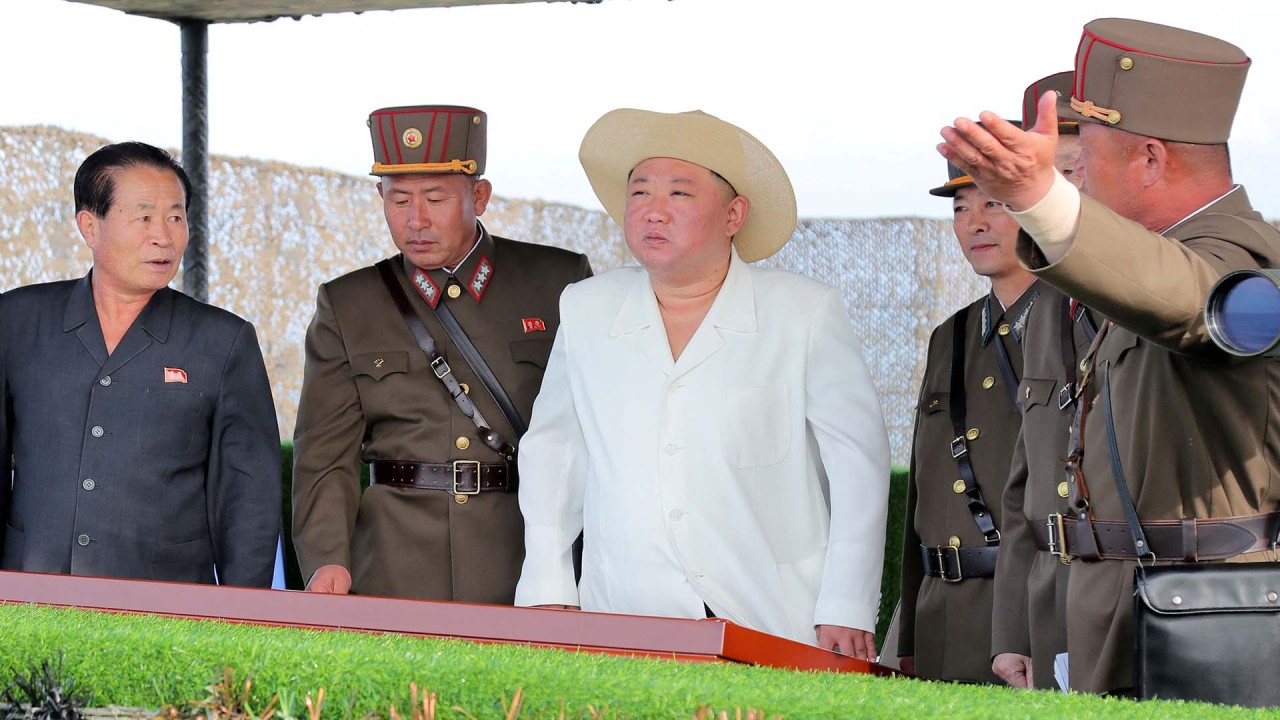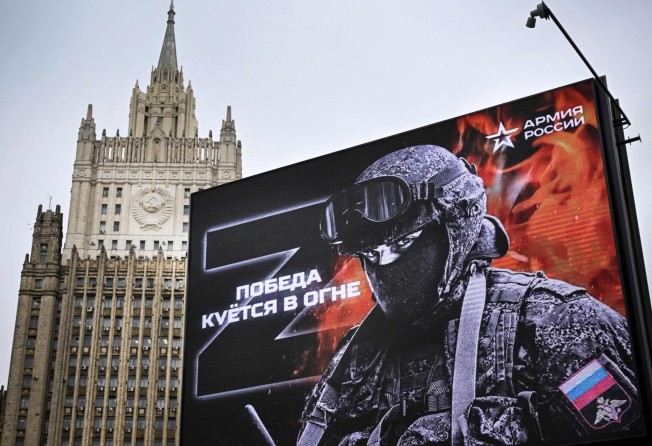
01:45
Kim Jong-un oversees missile launch, one of several recent tests by North Korea

For decades North Korea has threatened to turn enemy cities into a “sea of fire”, even as it doggedly worked on building a nuclear weapons programme that could back up its belligerent words.
Now, as North Korea conducts another torrid run of powerful weapons tests – and threatens pre-emptive nuclear strikes on Washington and Seoul – it may be taking inspiration from the fiery rhetoric of the leader of a nuclear-armed member of the UN Security Council: Russia’s Vladimir Putin.
With Putin raising the terrifying prospect of using tactical nukes to turn around battleground setbacks in Ukraine, there’s fear that this normalisation of nuclear threats is emboldening North Korean leader Kim Jong-un as he puts the finishing touches on his still incomplete nuclear programme.
“Putin and Kim feed off each other, routinising the right to nuke a peaceful neighbour by repeating it without repercussion,” said Sung-Yoon Lee, an expert on North Korea at Tufts University’s Fletcher School of Law and Diplomacy. “Putin’s threats sound more credible than Kim’s, as there is bloodshed in Ukraine every day. But Kim’s threats must not be dismissed as empty bluster.”
After more than 40 missile launches this year – its most ever – there are a host of fresh signs that North Korea is becoming more aggressive in making its nuclear bombs the centrepiece of its military.
A recent two-week barrage of missile launches was meant, according to North Korean media, to simulate the use of its tactical battlefield nuclear weapons to “hit and wipe out” potential South Korean and US targets. It’s believed to mark the first time that North Korea has performed drills involving army units tasked with the operation of tactical nuclear weapons.
The tests – all supervised by Kim – included a nuclear-capable ballistic missile launched under a reservoir; ballistic missiles designed for nuclear strikes on South Korean airfields, ports and command facilities; and a new-type ground-to-ground ballistic missile that flew over Japan.
State media on Thursday announced the tests the previous day of long-range cruise missiles, which Kim described as a successful demonstration of his military’s expanding nuclear strike capabilities and readiness for “actual war”.
There are also indications that North Korea is taking steps to deploy tactical nuclear weapons along its frontline border with South Korea. The North has also adopted a new law that authorises pre-emptive nuclear attacks over a broad range of scenarios, including non-war situations, when it perceives a threat to its leadership.
North Korea is still working to perfect its nuclear-tipped missile technology, but each new test pushes it closer to that goal.
“North Korea has been clearly emulating Putin’s approach in his war on Ukraine while using it as a window to accelerate arms development,” according to Park Won-gon, a professor of North Korea studies at Seoul’s Ewha Womans University.
In what’s seen as a reference to his nuclear arsenal, Putin has declared his readiness to use “all means available” to protect Russian territory. With a string of defeats in Ukraine leaving Putin increasingly cornered, observers worry that Putin could be tempted to explode a tactical nuclear weapon to avoid a defeat that may undermine his grip on power.

Battlefield nuclear weapons are intended to crush advancing enemy troops in one designated frontline section, and have a low yield compared to nuclear warheads fitted on strategic weapons. But even these types of nuclear weapons would expose huge numbers of civilians in densely populated Ukraine, and possibly Russia and other places, to radiation risks.
It would also have a devastating political impact, marking the first time nuclear weapons have been used since World War II and prompting rapid escalation that could end in all-out nuclear conflict.
The United States and its allies have said they are taking Putin’s threats seriously but won’t yield to what they described as Putin’s blackmail to force the West to abandon its support for Ukraine. Ukraine said it won’t halt its counteroffensive despite Russian nuclear strike threats.
US officials have said they don’t believe that Kim is going to launch conventional or nuclear attacks because of what the North Korean leader sees happening in Ukraine. Rather, they see Kim as worried that North Korea may be left behind in the international influence battle and therefore escalating because Putin is getting all the attention.
North Korea’s missile launches are seen by many as presaging an eventual test of a nuclear device.
Such tests, besides putting Washington and Seoul on the defensive, may be meant to win talks, on North Korean terms, with Washington that could eventually get the North recognised as a legitimate nuclear power. That, in turn, would force the international community to ease crushing sanctions and, eventually, negotiate the removal of nearly 30,000 US troops in South Korea.
Pyongyang’s ultimate goal, according to Lee, the Tufts professor, is to complete what Kim Jong-un’s grandfather, Kim Il-sung, began in 1950 with the surprise North Korean invasion of South Korea and establish a Korean peninsula ruled by the Kim family.
Putin’s moves in Ukraine could also help Kim by continuing to distract the US from focusing on North Korea and deepening a divide on the UN Security Council where Russia and China side with North Korea and prevent additional sanctions over the North’s recent tests, said Park, the analyst in Seoul.
“North Korea is paying as much attention to the [Ukraine] situation as anyone,” Park said. If Putin gets away with using nukes without suffering major repercussions, North Korea will see that as boosting its own nuclear doctrine, Park said.
The Korean peninsula is still technically at war because the 1950-53 conflict ended with an armistice not a peace treaty, and the two Koreas have a history of bloody skirmishes. North Korea fired artillery during South Korean military drills in 2010 that killed two civilians and two South Korean military members on a front-line island. An international panel also blamed the North for sinking a South Korean warship the same year, killing 46.
Similar future clashes could be followed by North Korean threats to use nuclear weapons, said Park. He noted that conventional military clashes between India and Pakistan increased after Pakistan acquired its own deterrent to counter its nuclear-armed rival, mainly because the perceived balance in strength emboldened the countries to carry out more aggressive military action.
Recent North Korean missile tests came despite a US aircraft carrier in nearby waters and during trilateral naval drills between the United States, South Korea and Japan, Park said. “This shows the growing confidence they have in their weapons.”